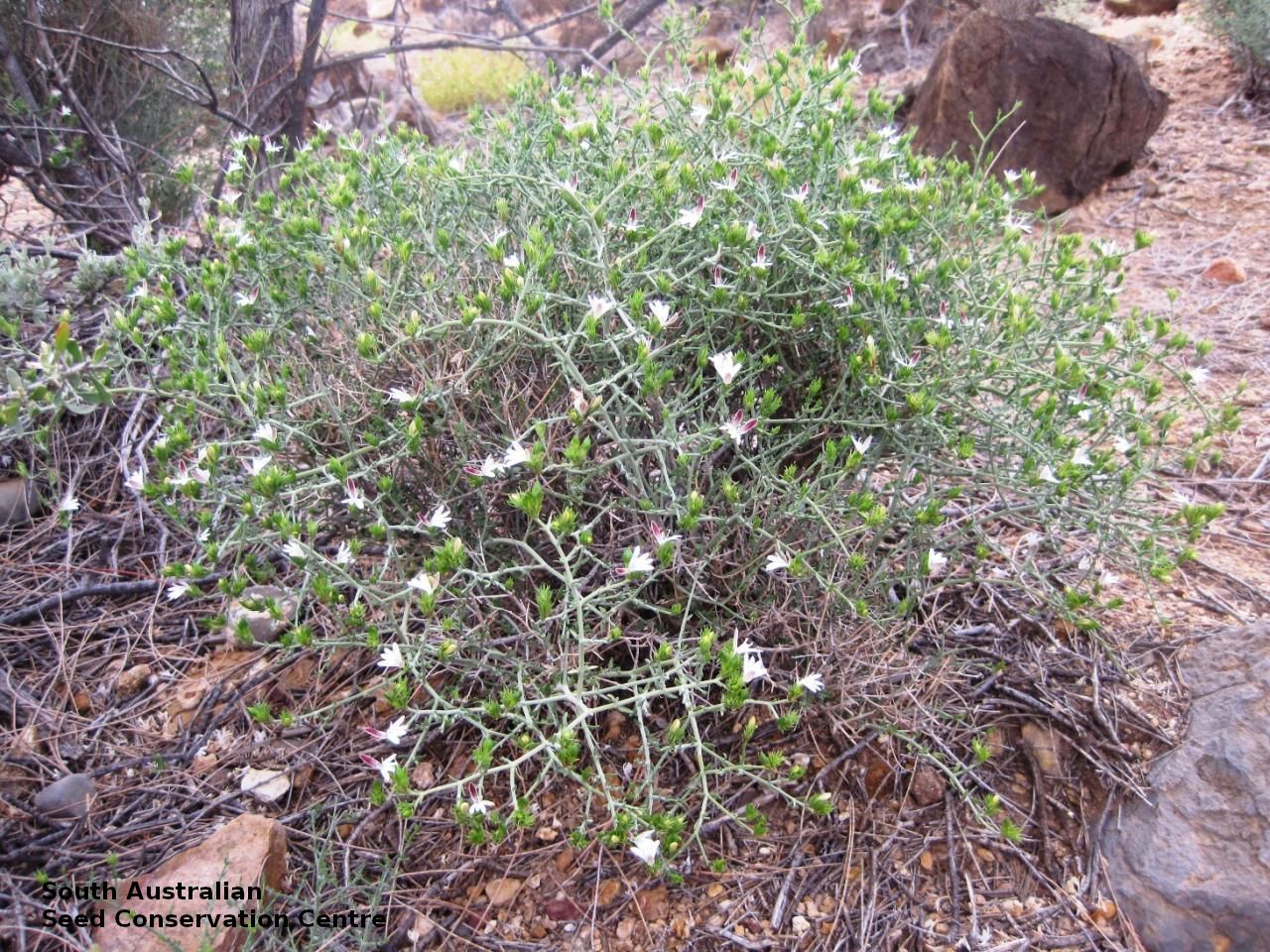
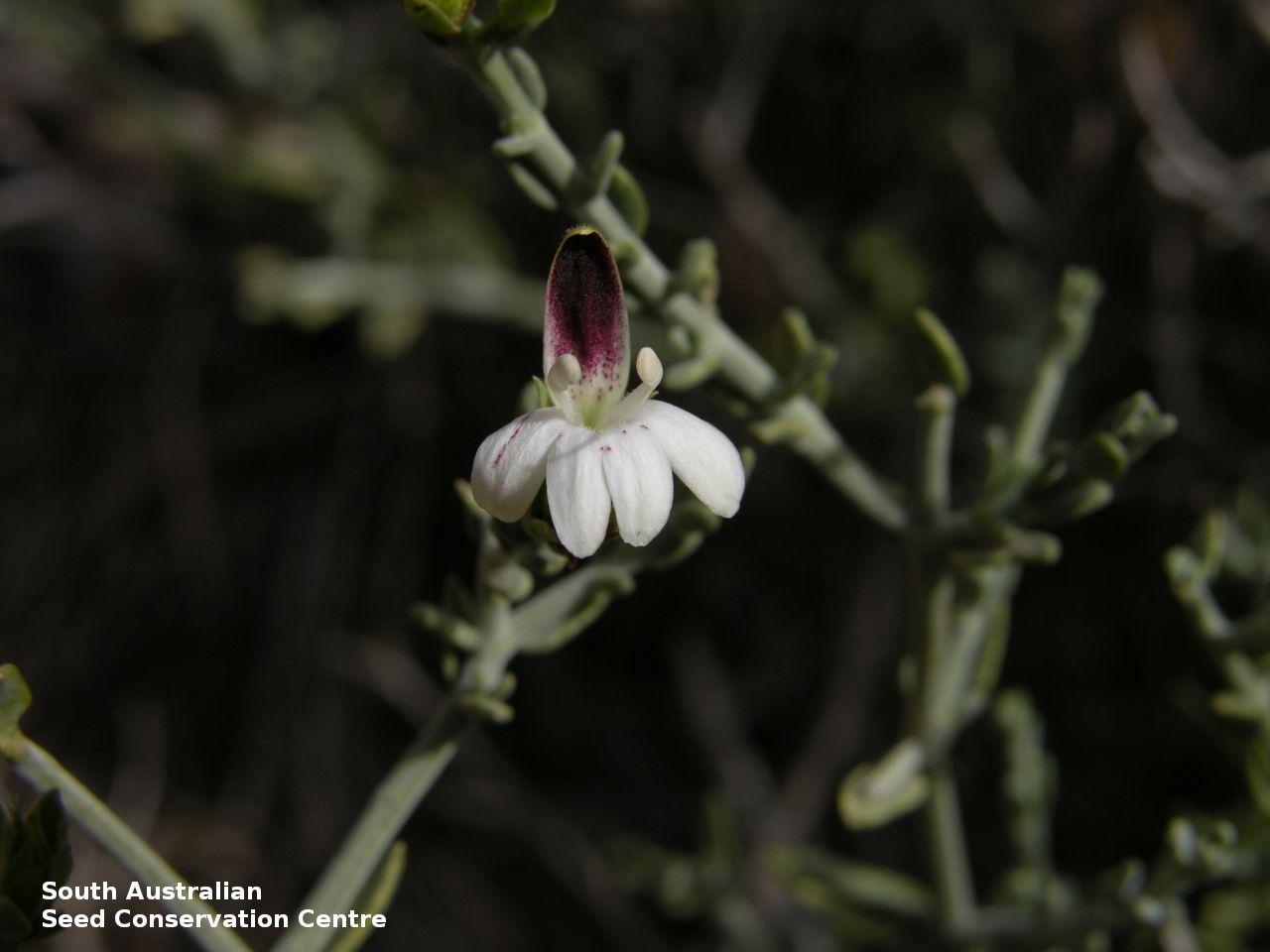
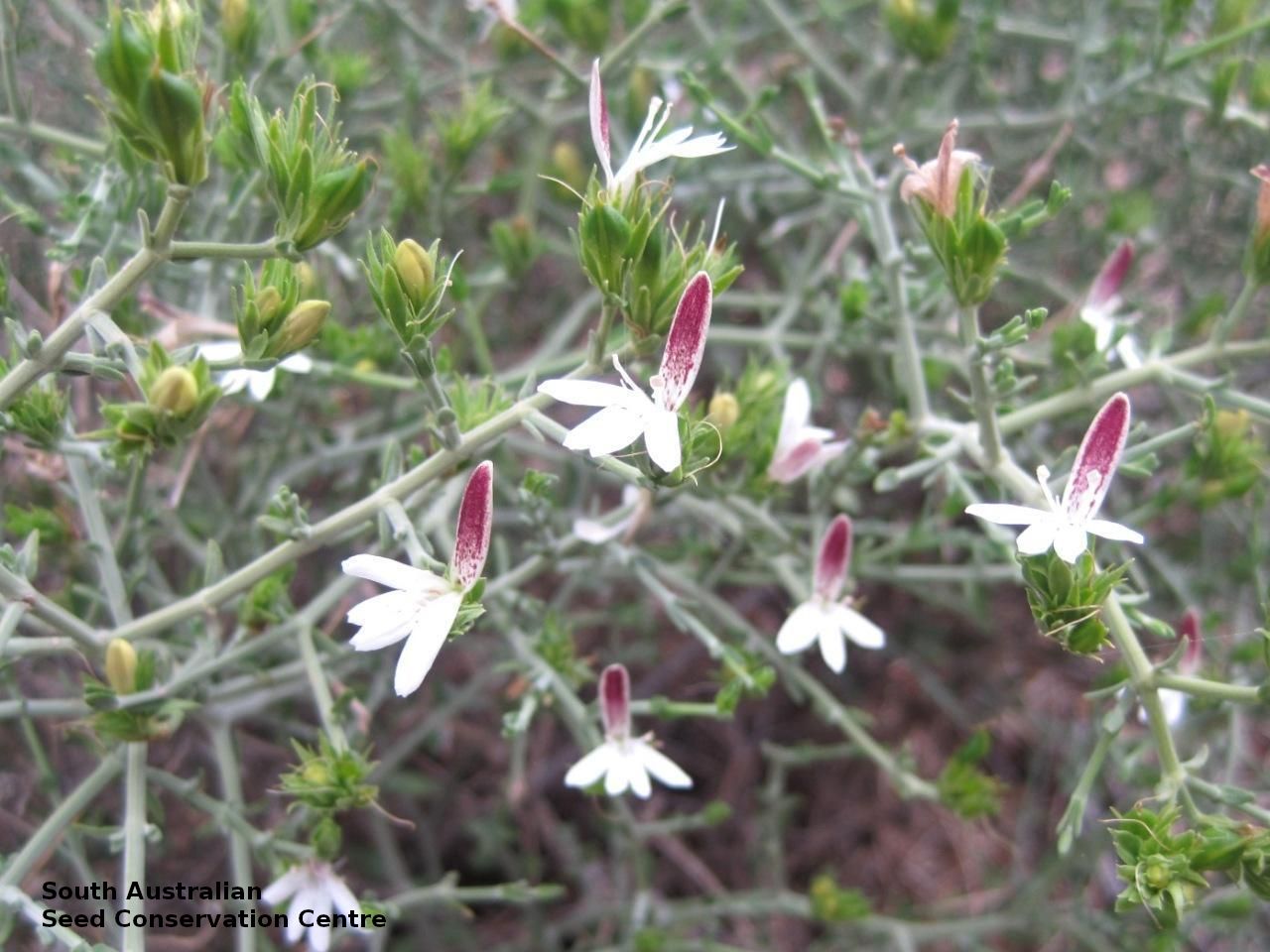

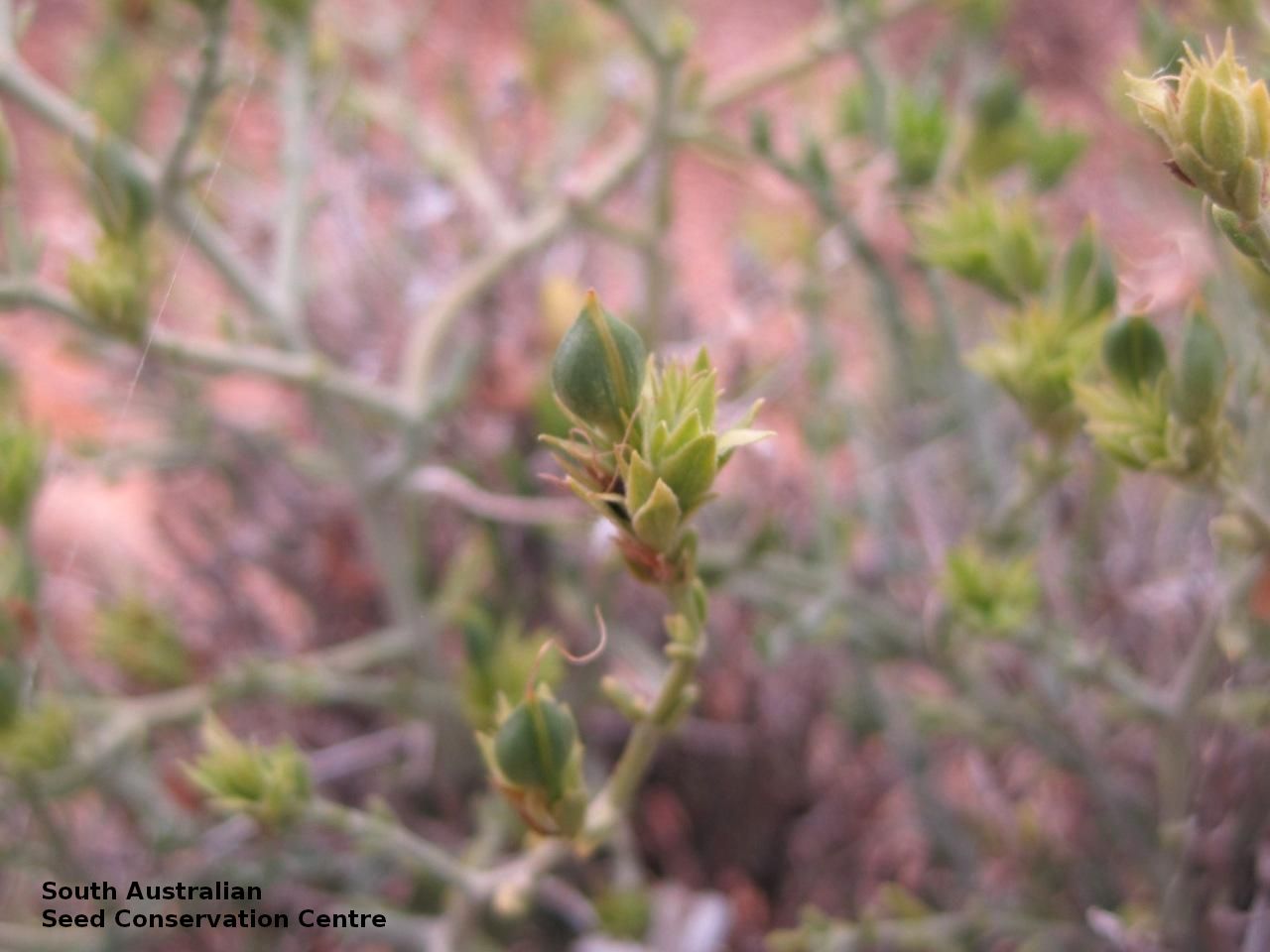
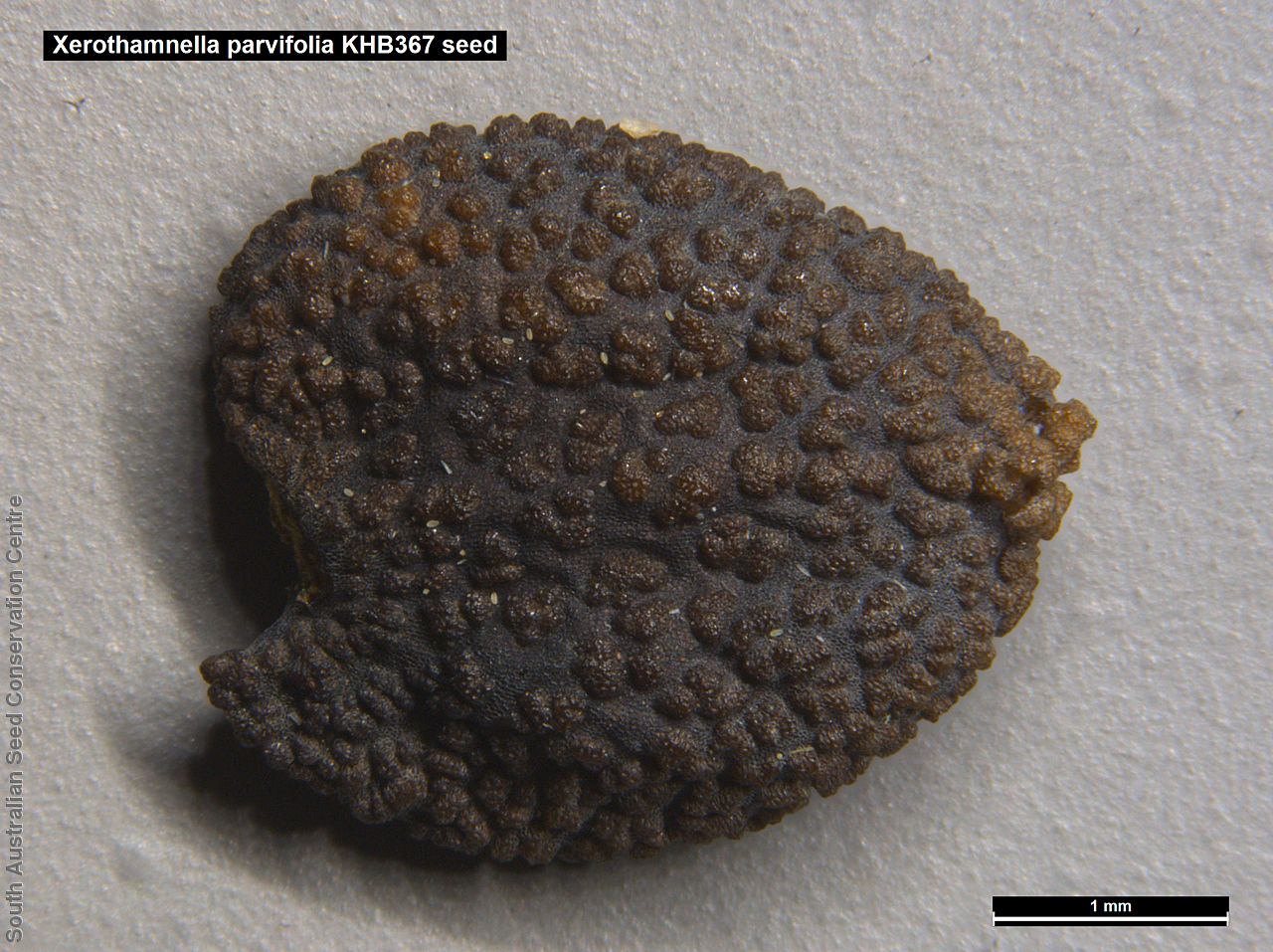
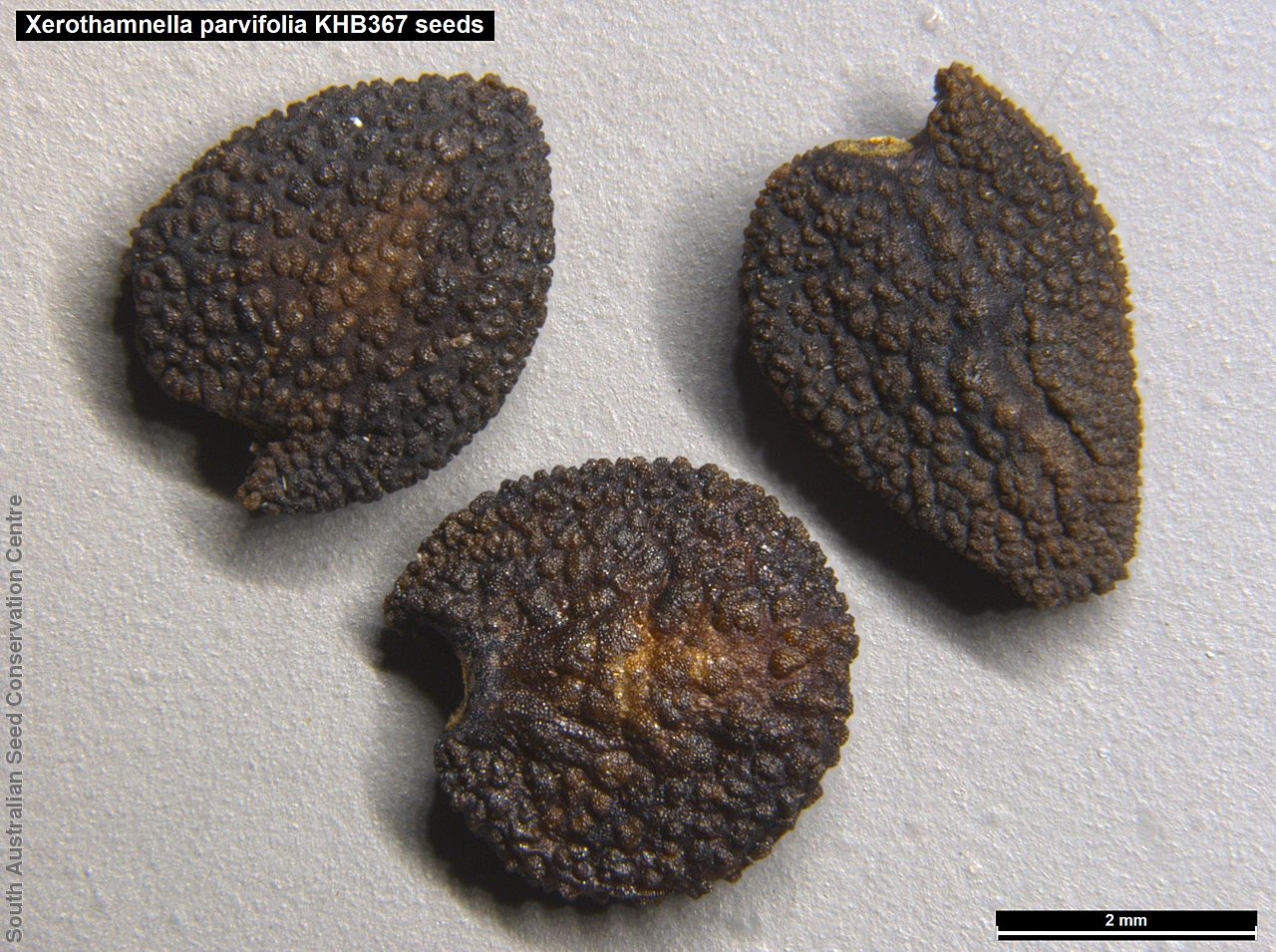
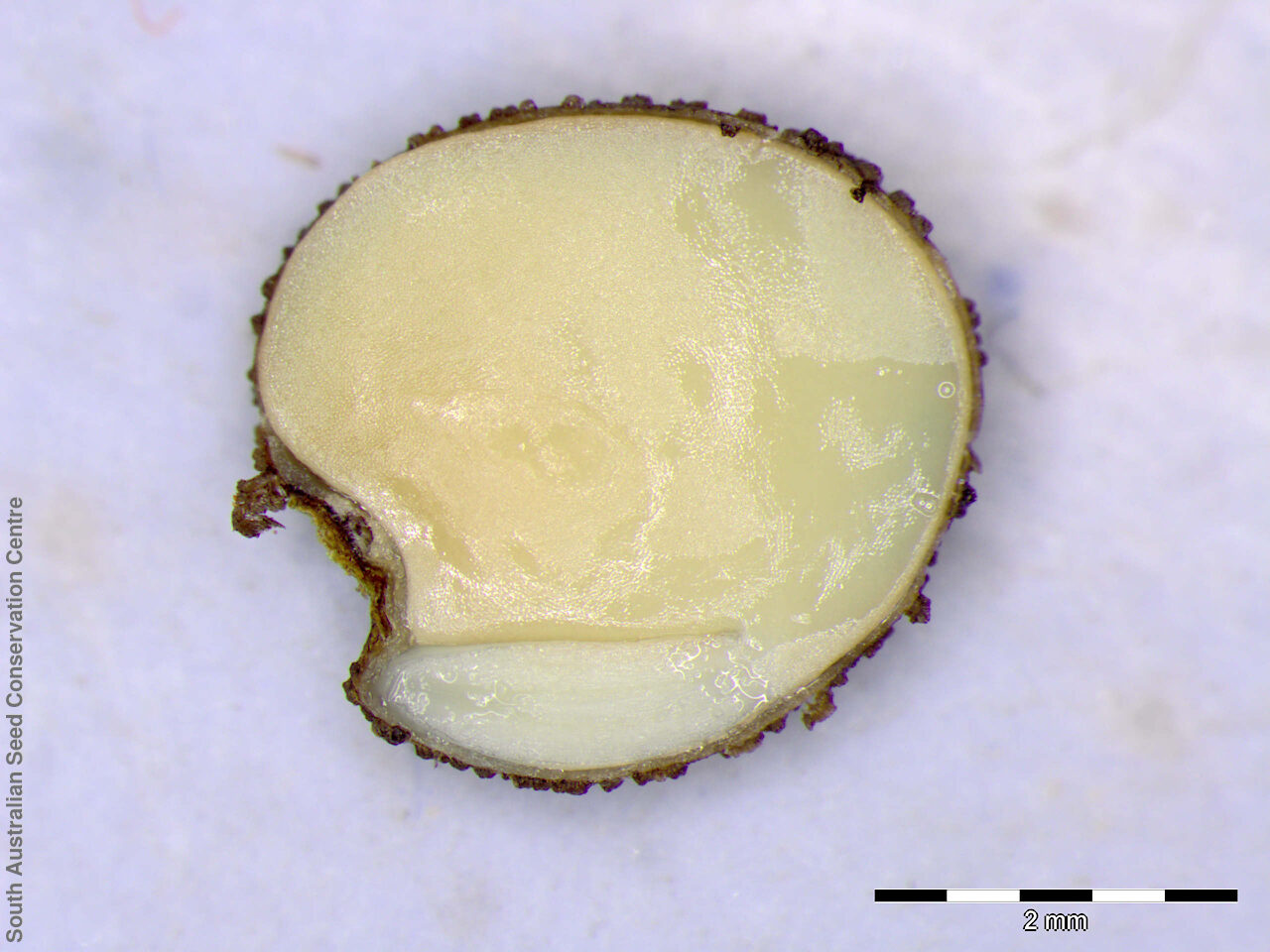
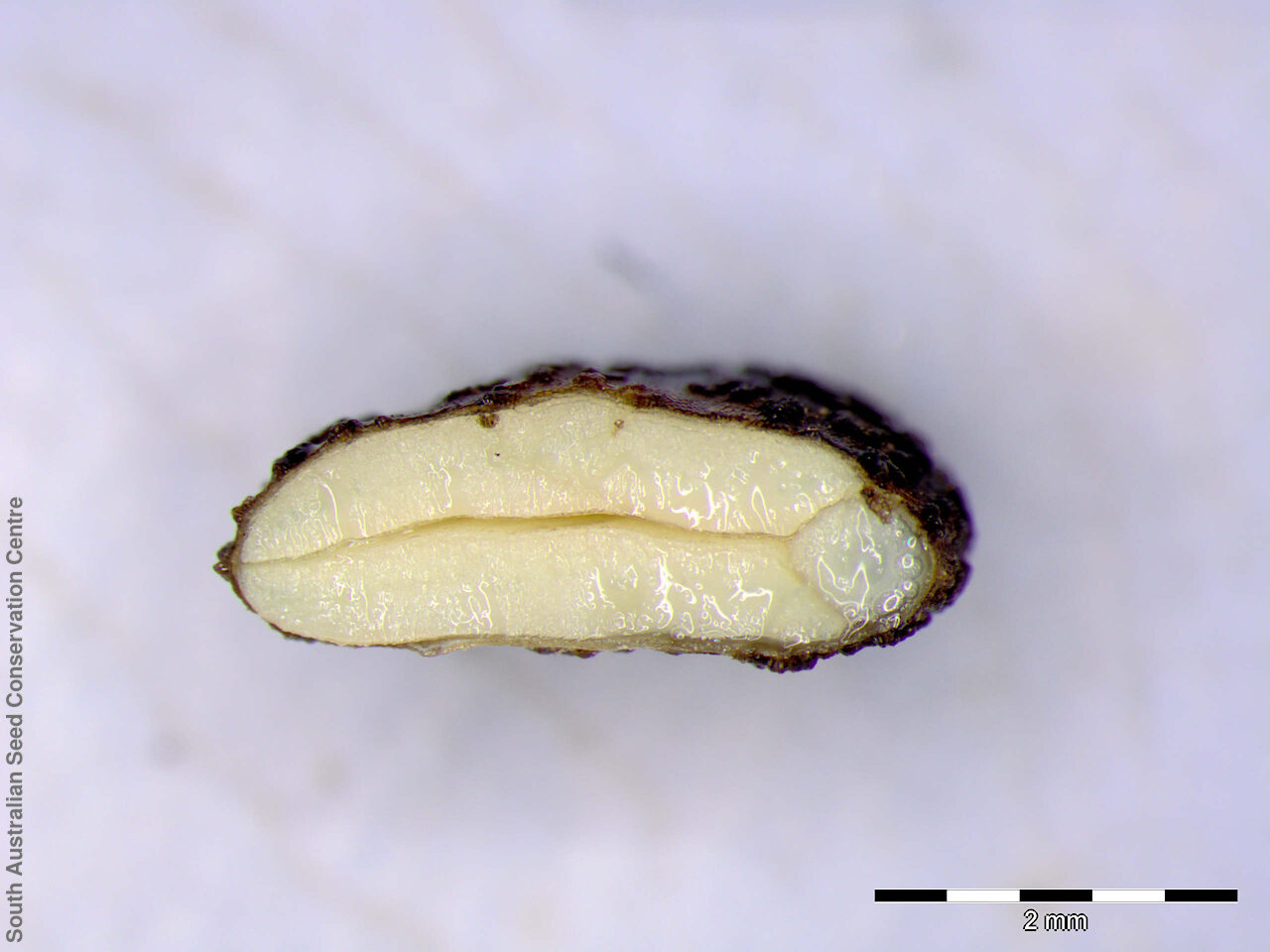



Common names
Freckled duck
Etymology
Xerothamnella from the Greek 'xiros' meaning dry and 'thamnus' meaning shrub, referring to its twiggy appearance. Parvifolia from the Latin 'parvus' meaning small and 'folium' meaning a leaf, referring to the species having few small leaves.
Distribution and status
Restricted to one locality on the eastern side of the northern Flinders Ranges in South Australia, growing on skeletal clay soils on slopes above gullies. Also found in Queensland and New South Wales. Native. Very rare in South Australia. Very rare in the other states. Vulnerable in South Australia under the EPBC Act.
Herbarium region: Flinders Ranges
AVH map: SA distribution map (external link)
Plant description
Low woody and much branching shrub to 1 m high and wide. Leaves small and usually on the younger stems, stalkless, thick to 10 mm long and 3 mm wide. Flowers singly in the upper leaf axils, consisting of 4 white upper petals and 1 red lower petal. Flowering between November to January. Fruits are flat elongated papery capsule to 8 mm long, containing 1 to 2 seeds each. Seeds are flat brown, reniform seed to 4 mm long and 3 mm wide, covered in small tubercules. Seed embryo type is bent.
Seed collection and propagation
Collect seeds between February and April. Collect capsules that are maturing, drying off and turning brown. Green capsules can be collected if the seeds are hard and brown. Place the capsules in a paper bag or tray and allow to dry for 1 to 2 weeks. Gently rub the dried capsule by hand to dislodge the seeds. Use a sieve to separate the unwanted material. Store the seeds with a desiccant such as dried silica beads or dry rice, in an air tight container in a cool and dry place. From one collection, the seed viability was high, at 90%. Seeds are non-dormant, viable seed should germinate readily without any treatment.
| Location | No. of seeds (weight grams) | Number of plants | Date collected | Collection number Collection location | Date stored | % Viability | Storage temperature |
|---|---|---|---|---|---|---|---|
| BGA | 4,400 (24 g) | 50+ | 14-Mar-2010 | KHB367 Flinders Ranges | 1-Jan-2012 | 90% | +5°C, -18°C |
Number of plants: This is the number of plants from which the seeds were collected.
Collection location: The Herbarium of South Australia's region name.
% Viability: Percentage of filled healthy seeds determined by a cut test or x-ray.